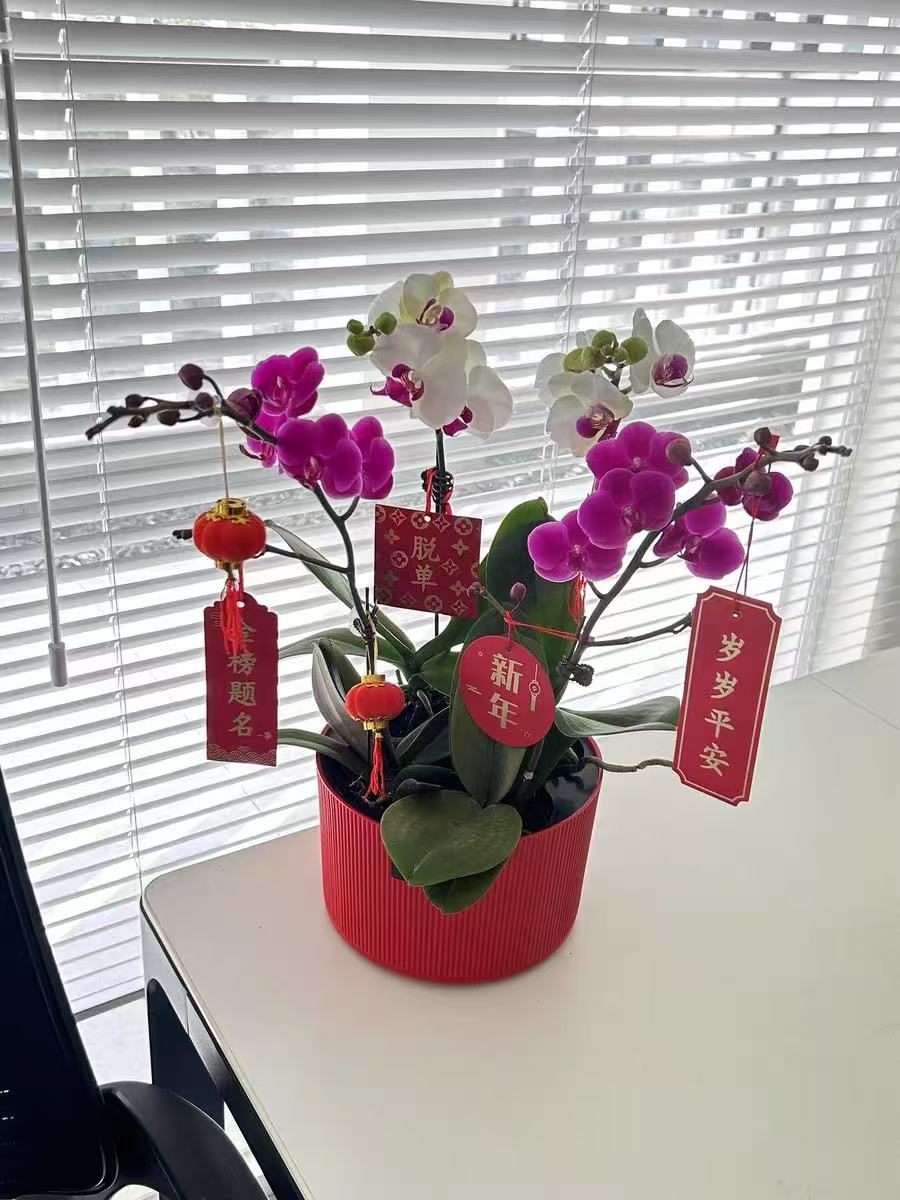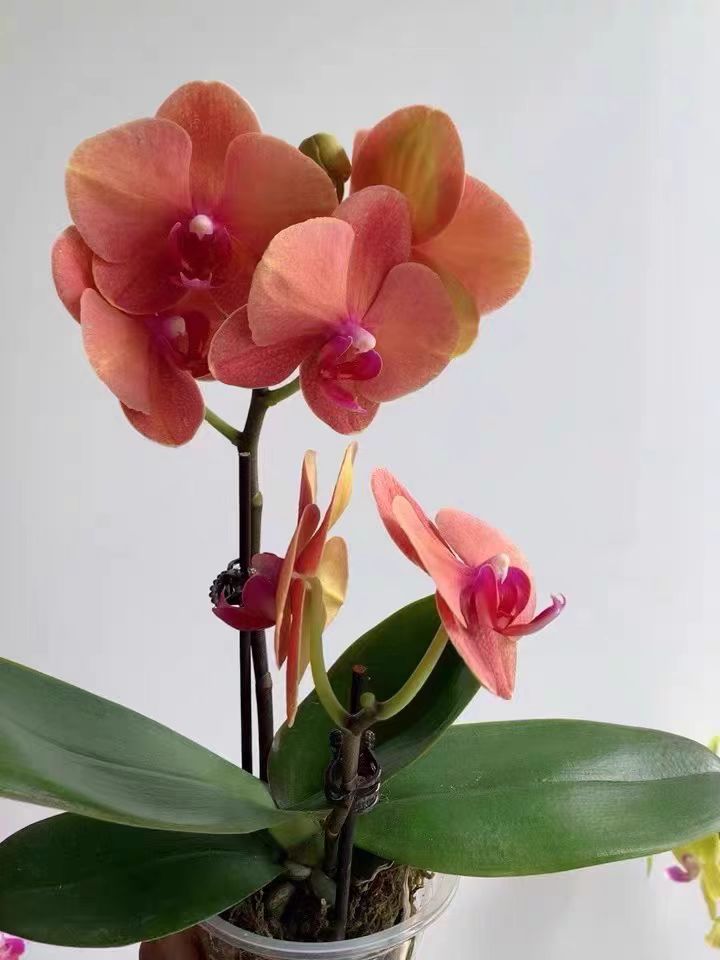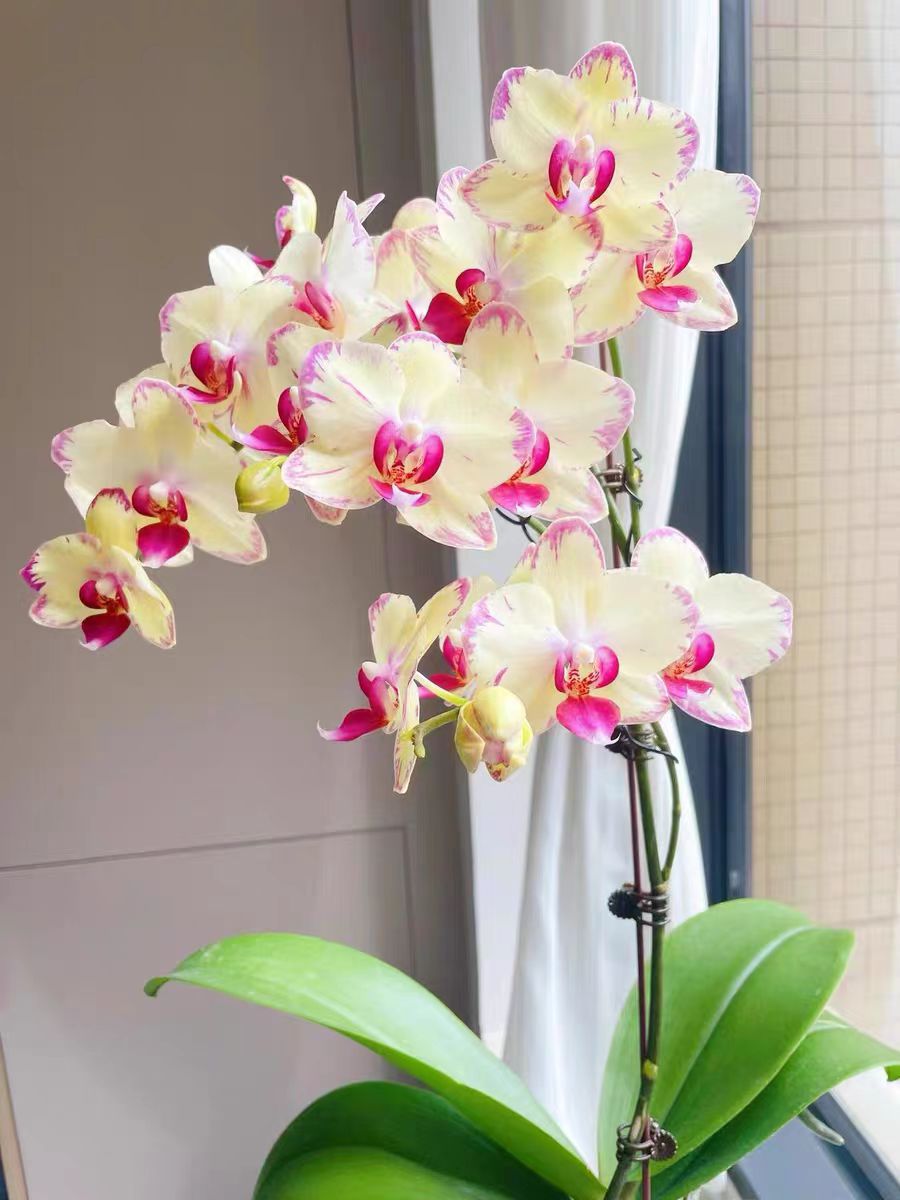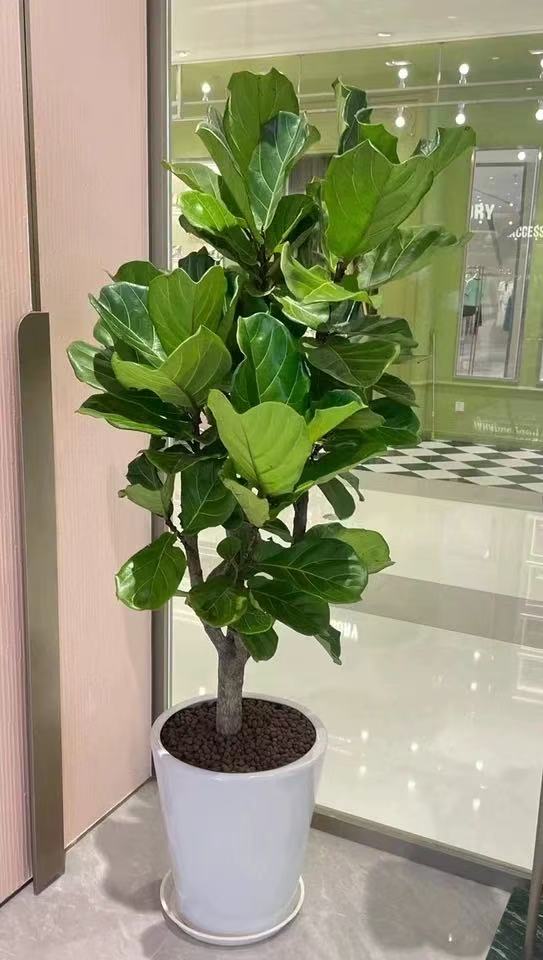As a tropical flower, Phalaenopsis is native to warm and humid environments and has specific requirements for light, temperature, and humidity. In summer, with intense sunlight and a sharp rise in temperature, higher demands are placed on the cultivation of Phalaenopsis. Whether Phalaenopsis can be placed outdoors mainly depends on the specific climatic conditions and cultivation environment.
Considerations for Outdoor Placement:
Light Management: Phalaenopsis prefers a semi - shaded environment. Direct exposure to the intense summer sunlight can easily cause leaf burns. Therefore, if there is diffused light or a shaded area outdoors, Phalaenopsis can be placed there briefly, but long - term direct sunlight should be avoided. It is recommended to use a shading net or white shading cloth to block the light to ensure moderate illumination.
Temperature Control: The most suitable growth temperature for Phalaenopsis is 15 - 28°C. During the high - temperature period in summer, the outdoor temperature often exceeds this range. Close attention should be paid and cooling measures should be taken. You can increase humidity by spraying water around with a sprayer or placing a water tray under the flower pot to help cool down.
Ventilation and Humidity: The outdoor environment usually has good ventilation, which helps Phalaenopsis avoid pests and diseases. However, care should be taken to avoid water splashing directly onto the flowers to prevent rotting. Maintaining the air humidity within an appropriate range can be achieved by spraying water around the plant or using a humidifier.
How to Cultivate Phalaenopsis in High - temperature Summer?
Watering and Substrate Management:
Appropriate Watering: In summer, water evaporates quickly, and Phalaenopsis needs to keep the substrate moist, but waterlogging should be avoided at all costs. It is recommended to follow the watering principle of "watering when the soil is dry and soaking thoroughly", that is, water after the surface of the substrate is dry, and water thoroughly at one time. Avoid frequent watering, which may lead to root rot.
Substrate Selection: Phalaenopsis likes a loose, breathable, and well - drained substrate. In high - temperature summer, it is recommended to use well - fermented pine bark and other substrates with good air permeability to avoid root - rotting problems caused by the excessive water - retention of sphagnum moss.
Fertilization and Nutrient Supply:
Reasonable Top - dressing: Summer is the growth period of Phalaenopsis, and appropriate fertilization is required. It is recommended to use diluted liquid fertilizer or organic fertilizer, applied once every 7 - 10 days. Be careful to avoid direct contact between the fertilizer and the flower buds to prevent the buds from falling off. When the temperature exceeds 35°C, fertilization should be stopped to avoid fertilizer damage.
Nutrient Adjustment: As the temperature rises, the growth rate of Phalaenopsis may slow down, and its demand for fertilizer will also decrease accordingly. When fertilizing, appropriate adjustments need to be made according to the growth state of the plant and the temperature.
Other Precautions:
Enhanced Ventilation: In summer, both indoors and outdoors are relatively stuffy. Keep the air circulating to avoid pests and diseases caused by high temperature and high humidity. If cultivating indoors, open windows frequently for ventilation; if cultivating outdoors, place it in a well - ventilated area.
Observation and Adjustment: Pay close attention to the growth state of Phalaenopsis, and adjust the cultivation measures such as light, temperature, humidity, and fertilization in a timely manner. Once any abnormalities are found in the plant, such as blackened leaf tips or limp leaves, immediately check the root condition and take corresponding rescue measures.
The cultivation of Phalaenopsis in summer needs to comprehensively consider many aspects such as light, temperature, humidity, watering, and fertilization. Through scientific and reasonable cultivation management, we can help Phalaenopsis survive the high - temperature period in summer safely and bloom more gloriously.
Can Phalaenopsis be placed outdoors in summer?

Share with
Tagged in :




Leave a Reply